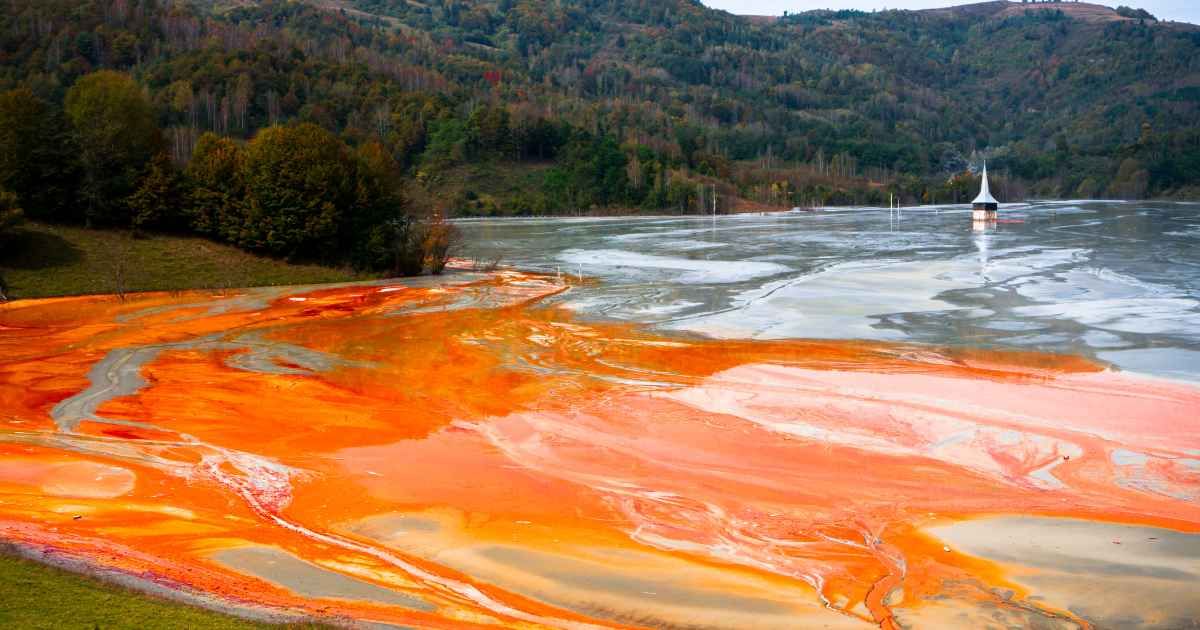
Email: jberger@ertitraining.com
Phone: 541-740-4241
Confronting the Murk Beneath the Surface Understanding Hazardous Waste in Our Waters
Hazardous waste in water presents a formidable challenge, but it's not insurmountable. Through awareness, collaboration, and innovation, communities can safeguard their water supplies and protect the health of their residents.

When we think about water, we often envision a clear, refreshing resource that quenches our thirst and nourishes our land. However, lurking beneath the surface in many of our waterways is a hidden danger—hazardous waste. This blog post will explore the risks associated with hazardous waste in water supplies, and importantly, how communities can respond to protect both their health and the environment.
The Invisible Threat How Hazardous Waste Contaminates Waterways
Hazardous waste can enter water systems through various sources, including industrial discharge, agricultural runoff, improper waste disposal, or even accidental spills. These substances can contain toxic elements like heavy metals, radioactive materials, and volatile organic compounds, which pose significant risks to both human health and ecosystems.
Detecting hazardous waste in water isn't always straightforward. Often, these substances are invisible to the naked eye, and testing requires advanced scientific methods. This invisibility makes the issue particularly insidious, as contamination can persist undetected until significant harm has already occurred.
The impact of hazardous waste on water supplies extends beyond immediate toxicity. These contaminants can accumulate in the food chain, affecting wildlife and ultimately human populations through bioaccumulation. This process magnifies the concentration of toxins in organisms, leading to severe health issues over time.
Health Risks at Stake How Hazardous Waste Affects Human Health
Exposure to hazardous waste in water supplies poses serious health risks. Contaminants can lead to acute effects such as skin irritation, gastrointestinal distress, and respiratory problems. In severe cases, they may even cause long-term consequences like cancer, neurological disorders, and reproductive harm.
Children and pregnant women are particularly vulnerable to the effects of hazardous waste. During critical developmental stages, exposure to toxins can result in congenital disabilities, developmental delays, and other lifelong health challenges. Protecting these populations is paramount for safeguarding community health.
The presence of hazardous waste doesn't just affect individual health—it also places a significant burden on public health systems. Addressing the consequences of contamination involves costly medical treatments, chronic disease management, and public health interventions, which strain already limited resources.
Environmental Impact The Toll of Hazardous Waste on Ecosystems
The introduction of hazardous waste into water systems disrupts aquatic ecosystems, harming biodiversity and altering natural processes. Polluted waters can lead to the death of fish and other organisms, reducing species diversity and impacting food webs.
Ecosystems are interdependent, and disruptions in one area can have cascading effects. The loss of key species due to contamination can alter predator-prey relationships, plant pollination, and nutrient cycling, ultimately destabilizing entire ecosystems.
Restoring ecosystems affected by hazardous waste is a challenging and often lengthy process. Efforts may include habitat restoration, species reintroduction, and continuous monitoring. These initiatives require collaboration among scientists, environmentalists, and local communities to ensure successful recovery.
Community Responsibility Mobilizing Local Action
Communities play a critical role in addressing hazardous waste in water supplies. Local governments, environmental activists, and health advocates can work together to implement policies and practices that prevent contamination and promote clean water access.
Public education is paramount in mobilizing community action. By raising awareness about the sources and dangers of hazardous waste, individuals can make informed decisions, advocate for policy changes, and adopt sustainable practices to reduce their environmental footprint.
Citizen involvement amplifies efforts to protect water resources. Encouraging community members to participate in water quality monitoring, report violations, and engage in conservation projects fosters a sense of ownership and responsibility for the well-being of their environment.
Policy Interventions Enforcing Regulations to Control Pollution
Strong regulatory frameworks are essential for controlling hazardous waste pollution. Governments must establish and enforce standards for waste disposal, industrial emissions, and agricultural practices to prevent contaminants from entering water systems.
Collaboration among agencies, industries, and communities is crucial for effective policy implementation. By working together, stakeholders can identify sources of pollution, develop best practices, and ensure compliance with environmental regulations.
Policy interventions should be adaptive and responsive to emerging threats. Continuous research and monitoring allow for the timely identification of new hazards and the development of targeted strategies to address them, ensuring the ongoing protection of water resources.
Innovative Solutions Harnessing Technology for Cleaner Water
Innovations in technology offer promising solutions for managing hazardous waste and improving water quality. Advanced filtration systems, bioremediation techniques, and real-time monitoring devices can detect and neutralize contaminants, safeguarding water supplies.
Investment in research and development enhances the capacity to address hazardous waste challenges. Supporting scientific advancements and pilot projects enables the testing and scaling of innovative technologies, driving progress toward cleaner water.
Technology alone cannot solve the issue of hazardous waste. Its success depends on integration with policy measures, community engagement, and sustainable practices. Together, these components form a comprehensive approach to protecting water resources for future generations.
Building Resilience Preparing Communities for Future Challenges
Resilience planning equips communities to withstand and recover from hazardous waste incidents. Developing emergency response plans, conducting risk assessments, and building infrastructure that mitigates contamination risks are essential for preparedness.
Education and training empower individuals to respond effectively to contamination events. Providing resources and support for emergency drills, workshops, and community discussions ensures that residents are informed and equipped to take action.
A resilient community is a collaborative community. By fostering partnerships between local authorities, businesses, and residents, communities can cultivate a culture of cooperation and mutual support, enhancing their ability to adapt to future environmental challenges.
Case Studies Communities Leading the Way in Addressing Hazardous Waste
Real-world examples demonstrate the impact of effective community responses to hazardous waste issues. Case studies highlight successful initiatives, innovative partnerships, and lessons learned from regions that have confronted and overcome contamination challenges.
These stories inspire action and provide valuable insights for other communities facing similar threats. By sharing experiences and strategies, regions can benefit from collective knowledge and expertise, accelerating progress toward safer, cleaner water.
Learning from case studies reinforces the importance of adaptability and perseverance. Each community's journey is unique, but common themes of collaboration, creativity, and commitment underscore the potential for positive change.
Global Perspective Understanding the Worldwide Scope of Hazardous Waste
Hazardous waste is a global issue, with water contamination affecting regions worldwide. International cooperation is essential for addressing transboundary pollution and sharing resources, knowledge, and technology to combat this pervasive challenge.
Global organizations play a pivotal role in setting standards and facilitating collaboration. Entities like the United Nations Environment Programme and the World Health Organization provide guidance, funding, and support for initiatives aimed at reducing hazardous waste pollution.
Cross-border partnerships amplify efforts to address hazardous waste. By working together, countries can implement coordinated strategies, conduct joint research, and share best practices, fostering a united front against water contamination.
Call to Action Taking Steps Toward a Cleaner Future
Combatting hazardous waste in water supplies requires a collective effort. Individuals, communities, and governments all have roles to play in promoting clean water access and protecting public health and the environment.
Taking action begins with education and advocacy. Informing others about the risks of hazardous waste, supporting policies and technologies that address pollution, and participating in community initiatives contribute to meaningful change.
Together, we can build a future where clean water is a reality for all. By prioritizing health, sustainability, and collaboration, we can create resilient communities that thrive in harmony with their environment.
Conclusion
Hazardous waste in water presents a formidable challenge, but it's not insurmountable. Through awareness, collaboration, and innovation, communities can safeguard their water supplies and protect the health of their residents. Whether you're an environmental activist, a local government official, or a health advocate, your role in this mission is vital. Let's commit to action and work together to achieve a cleaner, safer world for future generations.









